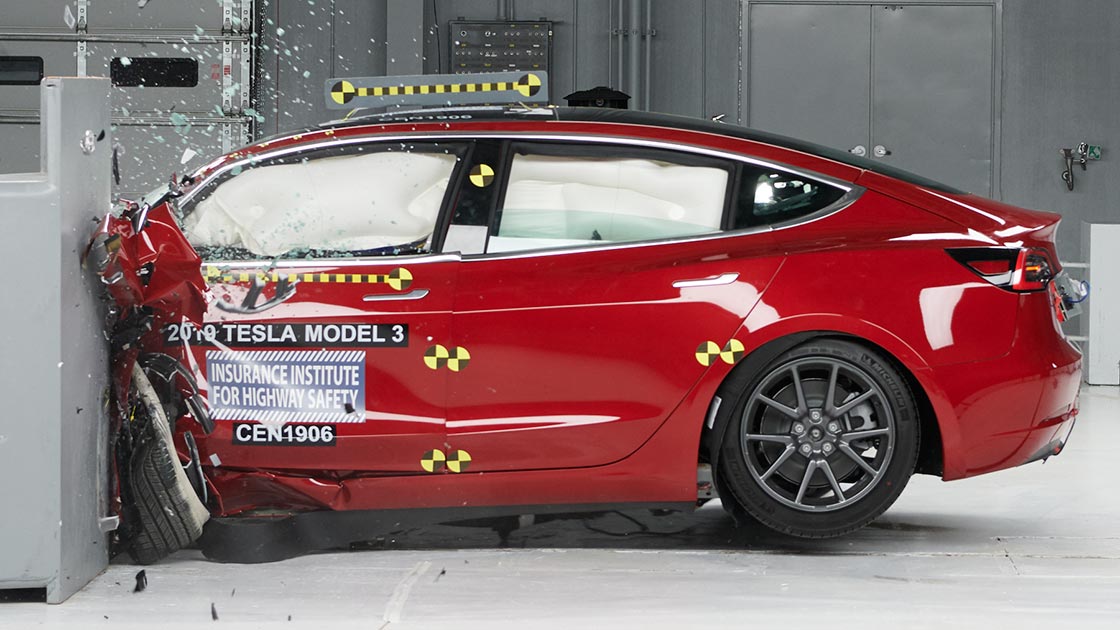
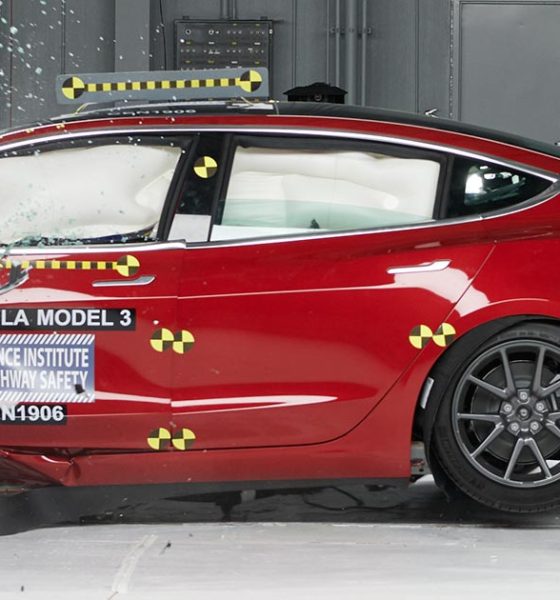
News
Tesla Model 3 receives Top Safety Pick+ award from the IIHS
The Insurance Institute for Highway Safety (IIHS) has released the results of its crash tests for the Tesla Model 3, and just like other safety agencies in the US and abroad, the organization has granted the all-electric sedan its highest rating available. In a recent announcement, the IIHS has revealed that the Tesla Model 3 qualifies for its Top Safety Pick+ award.
The IIHS notes that to earn the Top Safety Pick+ award, a vehicle must get good ratings in the driver-side small overlap front, moderate overlap front, side, roof strength, and head restraint tests. Good ratings are also required in the passenger-side small overlap test and the headlight evaluation, the latter proving to be a tricky metric that is rarely aced by carmakers.
The Model 3 earned good ratings across the board for crashworthiness, with the vehicle’s front crash prevention system getting a superior rating after successfully avoiding collisions in both the 12 mph and 25 mph track tests. The Model 3’s strong frame also allowed the vehicle to perform well in challenging tests such as the driver-side small overlap front test. Additionally, the Model 3’s headlights received a good rating for being bright enough without causing glare to other drivers.
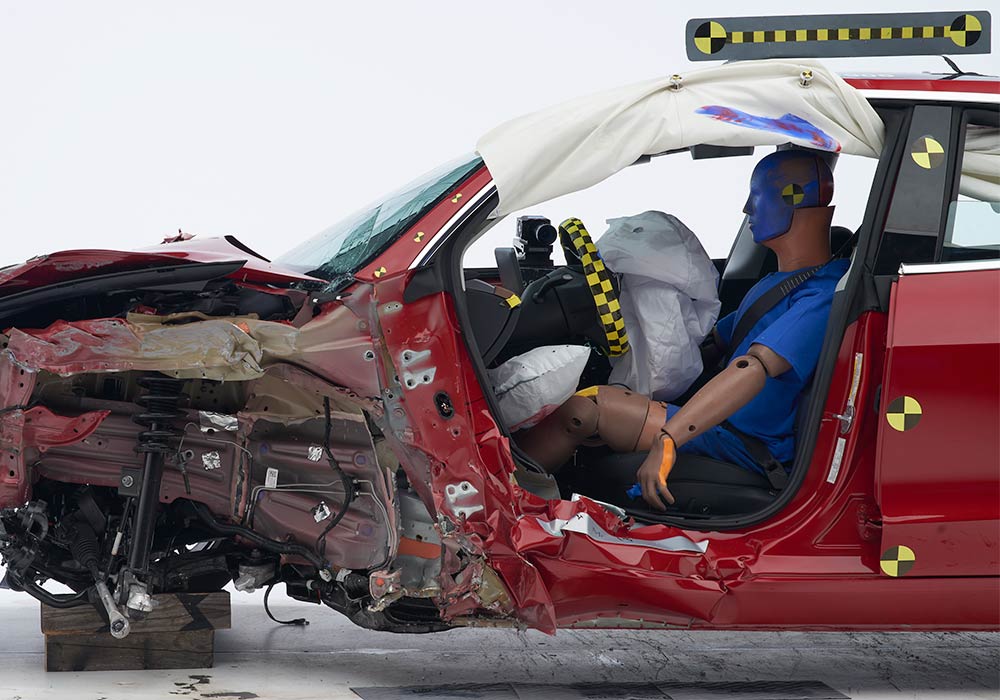
With its results, the Tesla Model 3 joins the all-electric Audi e-tron and the hydrogen-powered Hyundai Nexo as the IIHS’ Top Safety Pick+ vehicles for 2019. Speaking about these results, IIHS Chief Research Officer David Zuby remarked that the stellar safety performance of these vehicles proves that cars with alternative powertrains do not compromise in terms of safety. “Vehicles with alternative powertrains have come into their own. There’s no need to trade away safety for a lower carbon footprint when choosing a vehicle,” he said.
In a blog post, Tesla explained that the Model 3’s Top Safety Pick+ rating from the IIHS is due to the vehicle’s all-electric structural and powertrain design, which gives the car a low center of gravity that reduces rollover risk while protecting occupants in the event of a crash. Of course, the absence of an engine results in a generous crumple zone in front of the Model 3, which absorbs energy more effectively during a collision. The Model 3’s glass roof also proved very strong, resisting more than 20,000 pounds of force.
Apart from receiving the IIHS’ Top Safety Pick+ rating, the Tesla Model 3 has also earned a 5-Star Safety Rating from the National Highway Traffic Safety Administration (NHTSA). The all-electric sedan also set new benchmarks in safety at its tests with the European New Car Assessment Program (Euro NCAP), as well as the Australasian New Car Assessment Program (ANCAP).
Watch the IIHS’s featurette on the Tesla Model 3’s stellar safety results in the video below.
Read Tesla’s blog post about the IIHS’ Top Safety Pick+ award for the Model 3 below.
Model 3 Earns the 2019 IIHS TOP SAFETY PICK+ Award
We engineer our cars to be the best in the world – in every category. Model 3, our most affordable car yet, is no exception. From the start, we designed it to be among the safest cars ever built, with the goal of getting as many Model 3s on the road as possible to further our mission.
Model 3 has already earned a 5-star safety rating in every category and sub-category from safety authorities on three continents (North America, Europe and Australia), and it has received top marks around the world for its advanced safety assistance features like Automatic Emergency Braking.
Now, in new tests from the Insurance Institute for Highway Safety (IIHS), Model 3 has been named a 2019 IIHS TOP SAFETY PICK+ vehicle, the highest achievement awarded by the Institute. To evaluate whether Model 3 met the criteria for this top rating, IIHS tested the car’s crashworthiness, occupant protection, crash avoidance, and headlight systems. Model 3 earned top marks in all eight tests, including a superior rating in front crash prevention, which evaluates a car’s Automatic Emergency Braking system, and the highest possible rating in IIHS’ headlight assessment.
Here’s a look at some of the ways we made this happen:
Part of what makes Model 3 so safe is its all-electric powertrain design, which gives the car a low center of gravity that reduces roll-over risk, as well as its rigid aluminum and steel passenger cabin that provides exceptional strength to equally protect drivers and passengers. Additionally, Model 3’s lack of an engine is replaced by a large crumple zone that helps it absorb energy more effectively than a gas car would, dissipating force away from the passenger cabin. This crumple zone contributed to Model 3’s top rating in IIHS’ frontal crash protection tests.
The Institute’s results also demonstrate the exceptional strength of Model 3’s all-glass roof, which is supported by a very strong metal body structure and helps protect occupants in roll-over crashes. During testing, the car’s roof was able to successfully resist more than 20,000 pounds of force – that’s more than if we placed five Model 3s on top of the car’s roof at once. And, the roof earned a higher strength-to-weight ratio score than any other fully electric vehicle that IIHS has ever tested.
In addition, Model 3’s safety restraint system also earned high marks in IIHS’ evaluation. This was due in part to Model 3’s seats, which are designed and manufactured in-house at our dedicated seat factory in Fremont, as well as our thick curtain airbag and uniquely shaped front passenger airbag, which help protect a passenger’s head from the car’s A-pillar and center screen.
In terms of crash mitigation, good headlights can help prevent nighttime crashes, which is why Model 3 comes standard with automatic high and low beam headlights that earned top marks in IIHS testing. And, when it comes to crash prevention, Model 3 earned a superior rating thanks to our Automatic Emergency Braking system, which successfully avoided collisions at both 12 miles per hour and 25 miles per hour.
The safety of our customers is what matters most, which is why our active safety features and passive safety equipment come standard on all of our cars. We’re also committed to making our cars even safer over time via over-the-air updates, helping us ensure that all Tesla drivers have access to the best safety features available for their cars.

News
Tesla gets a win in Sweden as union withdraws potentially “illegal” blockade
As per recent reports, the Vision union’s planned anti-Tesla action might have been illegal.

Swedish union Vision has withdrawn its sympathy blockade against Tesla’s planned service center and showroom in Kalmar. As per recent reports, the Vision union’s planned anti-Tesla action might have been illegal.
Vision’s decision to pull the blockade
Vision announced the blockade in early December, stating that it was targeting the administrative handling of Tesla’s facility permits in Kalmar municipality. The sympathy measure was expected to start Monday, but was formally withdrawn via documents sent to the Mediation Institute and Kalmar Municipality last week.
As noted in a Daggers Arbete report, plans for the strike were ultimately pulled after employer group SKR highlighted potential illegality under the Public Employment Act. Vision stressed its continued backing for the Swedish labor model, though Deputy negotiation manager Oskar Pettersson explained that the Vision union and IF Metall made the decision to cancel the planned strike together.
“We will not continue to challenge the regulations,” Petterson said. “The objection was of a technical nature. We made the assessment together with IF Metall that we were not in a position to challenge the legal assessment of whether we could take this particular action against Tesla. Therefore, we chose to revoke the notice itself.”
The SKR’s warning
Petterson also stated that SKR’s technical objection to the Vision union’s planned anti-Tesla strike framed the protest as an unauthorized act. “It was a legal assessment of the situation. Both for us and for IF Metall, it is important to be clear that we stand for the Swedish model. But we should not continue to challenge the regulations and risk getting judgments that lead nowhere in the application of the regulations,” he said.
Vision ultimately canceled its planned blockade against Tesla on December 9. With Vision’s withdrawal, few obstacles remain for Tesla’s long-planned Kalmar site. A foreign electrical firm completed work this fall, and Tesla’s Careers page currently lists a full-time service manager position based there, signaling an imminent opening.
News
Tesla Semi program Director teases major improvements
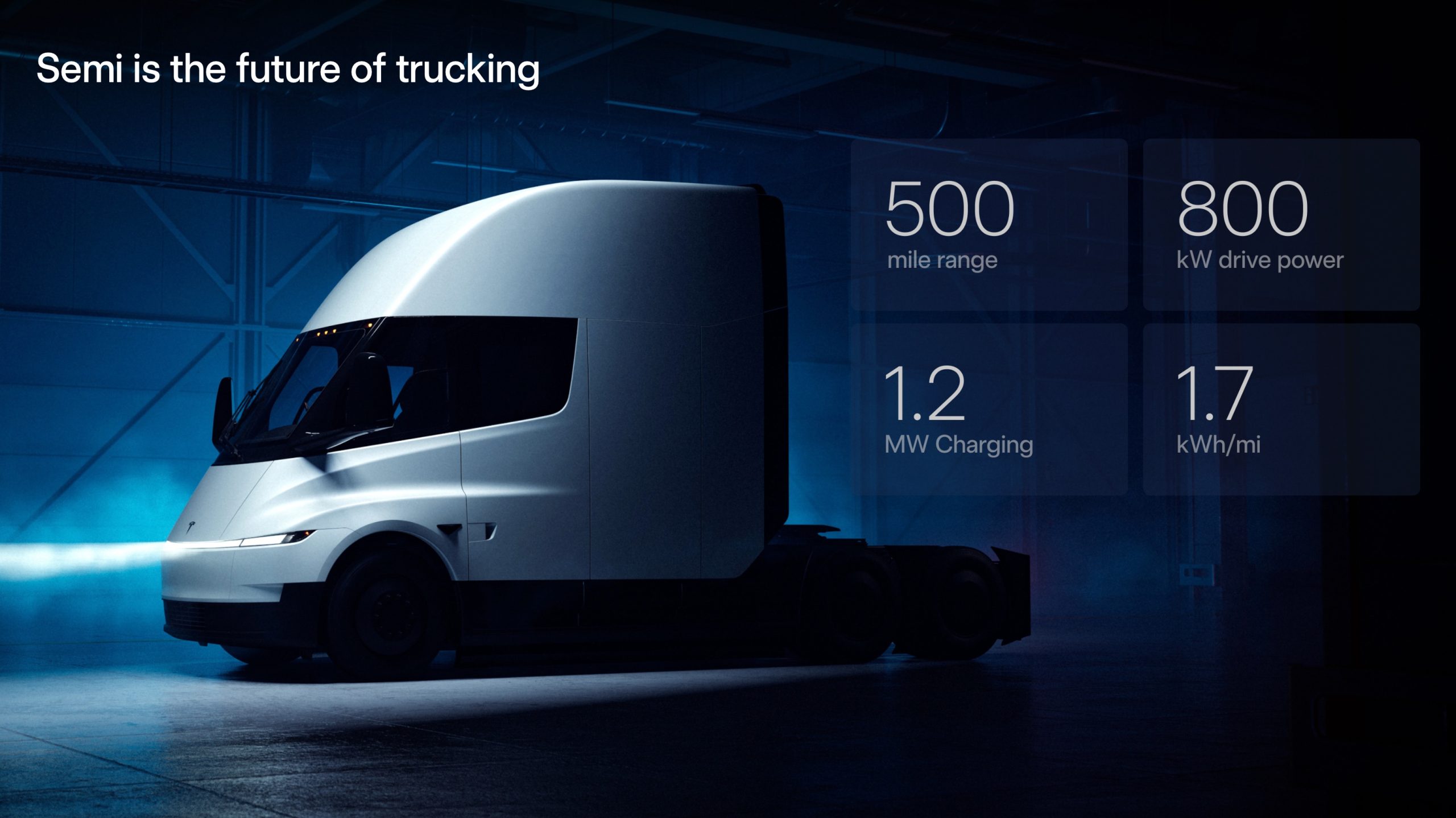
Tesla Semi Program Director Dan Priestly teased the major improvements to the all-electric Class 8 truck on Thursday night, following the company’s decision to overhaul the design earlier this year.
Priestley said he drove the Semi on Thursday, and the improvements appear to be welcomed by one of the minds behind the project. “Our customers are going to love it,” he concluded.
Just drove the redesigned Semi. Our customers are going to love it. https://t.co/KZ88sf1CDL
— Dan Priestley (@danWpriestley) December 19, 2025
The small detail does not seem like much, but it is coming from someone who has been involved in the development of the truck from A to Z. Priestley has been involved in the Semi program since November 2015 and has slowly worked his way through the ranks, and currently stands as the Director of the program.
Tesla Semi undergoes major redesign as dedicated factory preps for deliveries
Tesla made some major changes to the Semi design as it announced at the 2025 Annual Shareholder Meeting that it changed the look and design to welcome improvements in efficiency.
Initially, Tesla adopted the blade-like light bar for the Semi, similar to the one that is present on the Model Y Premium and the Cybertruck.
Additionally, there are some slight aesthetic changes to help with efficiency, including a redesigned bumper with improved aero channels, a smaller wraparound windshield, and a smoother roofline for better aero performance.
All of these changes came as the company’s Semi Factory, which is located on Gigafactory Nevada’s property, was finishing up construction in preparation for initial production phases, as Tesla is planning to ramp up manufacturing next year. CEO Elon Musk has said the Semi has attracted “ridiculous demand.”
The Semi has already gathered many large companies that have signed up to buy units, including Frito-Lay and PepsiCo., which have been helping Tesla test the vehicle in a pilot program to test range, efficiency, and other important metrics that will be a major selling point.
Tesla will be the Semi’s first user, though, and the truck will help solve some of the company’s logistics needs in the coming years.
News
Tesla dominates in the UK with Model Y and Model 3 leading the way
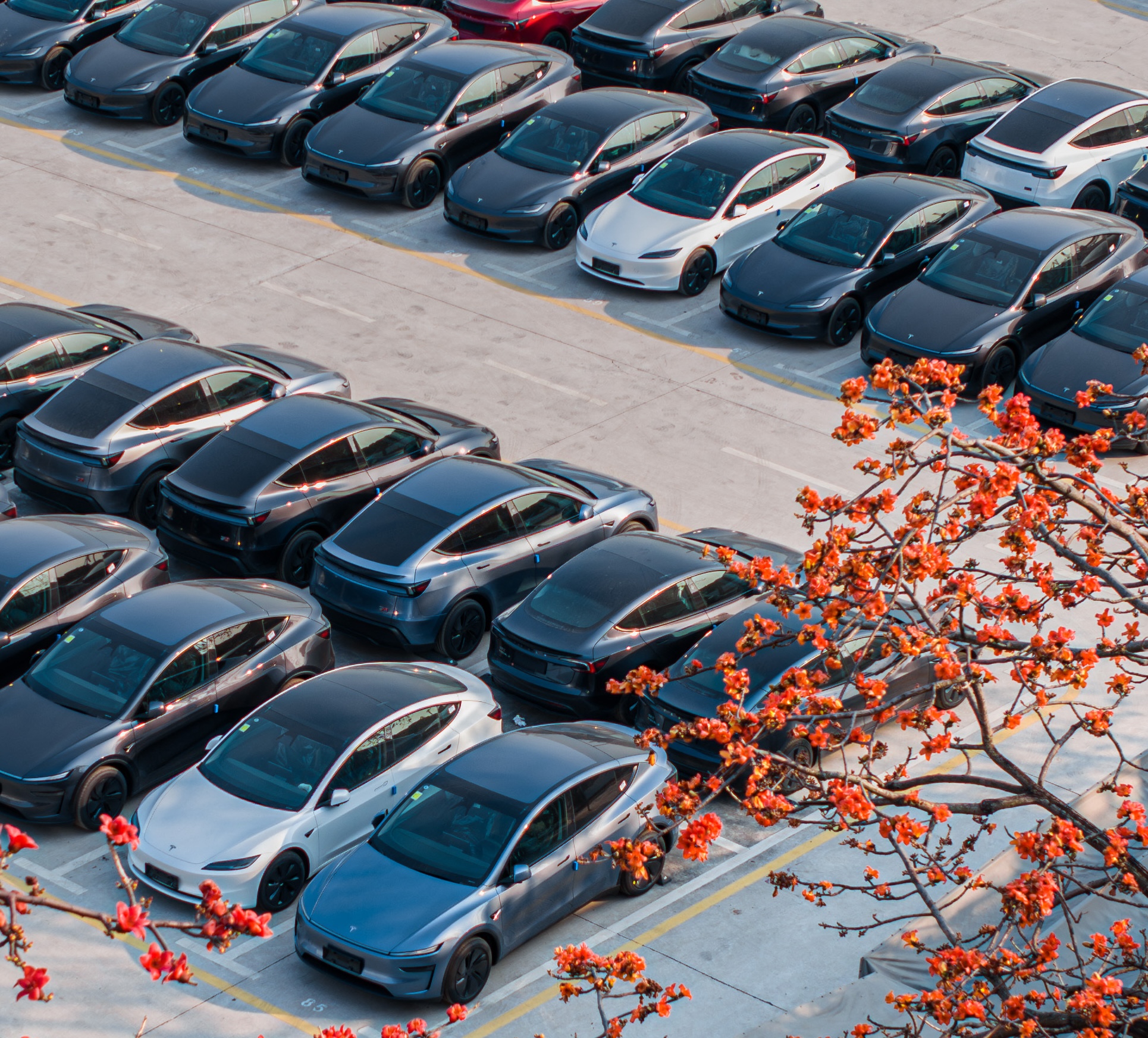
Tesla is dominating in the United Kingdom so far through 2025, and with about two weeks left in the year, the Model Y and Model 3 are leading the way.
The Model Y and Model 3 are the two best-selling electric vehicles in the United Kingdom, which is comprised of England, Scotland, Wales, and Northern Ireland, and it’s not particularly close.
According to data gathered by EU-EVs, the Model Y is sitting at 18,890 units for the year, while the Model 3 is slightly behind with 16,361 sales for the year so far.
The next best-selling EV is the Audi Q4 e-tron at 10,287 units, lagging significantly behind but ahead of other models like the BMW i4 and the Audi Q6 e-tron.
GOOD NEWS 🇬🇧 Tesla is absolutely crushing the UK electric vehicle market in 2025 💥
The numbers are in, and the dominance is clear. With an impressive amount of 42,270 vehicles delivered year-to-date, the brand now commands a solid 9.6% market share of the total auto market 🆒… pic.twitter.com/dkiGX9kzd0
— Ming (@tslaming) December 18, 2025
The Model Y has tasted significant success in the global market, but it has dominated in large markets like Europe and the United States.
For years, it’s been a car that has fit the bill of exactly what consumers need: a perfect combination of luxury, space, and sustainability.
Both vehicles are going to see decreases in sales compared to 2024; the Model Y was the best-selling car last year, but it sold 32,610 units in the UK. Meanwhile, the Model 3 had reached 17,272 units, which will keep it right on par with last year.
Tesla sold 50,090 units in the market last year, and it’s about 8,000 units shy of last year’s pace. It also had a stronger market share last year with 13.2 percent of the sales in the market. With two weeks left in 2025, Tesla has a 9.6 percent market share, leading Volkswagen with 8 percent.
The company likely felt some impact from CEO Elon Musk’s involvement with the Trump administration and, more specifically, his role with DOGE. However, it is worth mentioning that some months saw stronger consumer demand than others. For example, sales were up over 20 percent in February. A 14 percent increase followed this in June.








